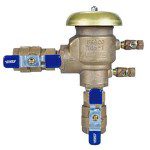- Written by water

What is a backflow prevention valve?
That is a question most property owners never have a need to ask, and in truth know nothing about, and yet a backflow prevention valve is at least partially responsible for you have clean drinking water 24/7, 365 days per year. Let’s take a look at this rather important device and how it affects your life, and if you have questions give us a call at (817) 996-2000. We are City Backflow Testing and we are standing by with the information you seek about backflow preventers.
The backflow prevention valve
To be precise, the backflow prevention valve is a one-way valve, only allowing flow in one direction. It is attached at cross-connection points in a city’s water system, and its main purpose is to prevent water from flowing in the wrong direction.
Is backflow possible?
Backflow is not only possible but highly probable under certain conditions, meaning it is highly probable that polluted water can flow back towards, and into, a city’s clean water supply. It has happened and it would happen with great regularity if it were not for backflow devices like the backflow prevention valve.
In a perfect world, water is “forced” through pipes, from the city’s potable water supply to homes and businesses by means of water pressure. The entire water system works smashingly well as long as that water pressure is greatest at the city’s end of the system. If, however, the water pressure were to suddenly drop i.e. a major fire requiring fire hydrants being opened, or a busted water main, then the water pressure can plummet so far down that it is actually greater at the home or business end of the water system. When that occurs, water will reverse flow and flow back towards the water supply.
And that would be disastrous if not for the backflow prevention valve.
Annual backflow testing
Because of the Clean Water Act of 1972, all cities require annual backflow testing be conducted at high-risk properties. These are usually commercial properties, although locations using irrigation are also included. This backflow testing is conducted by trained and certified backflow testers who conduct a complete, thorough backflow inspection of the backflow parts to make sure it is working properly. The results of that inspection are then filed with the city’s public works department. If repairs are necessary, only certified and approved backflow parts are allowed, parts made by companies like Ames or FEBCO.
You can find out if your property is required to have backflow testing by contacting your city’s cross-connection/backflow department, which is usually the Public Works Department. They will have a complete list of backflow inspection properties, and they will also have a complete list of backflow inspection companies and backflow testers.
About City Backflow Testing
Trained and trusted all throughout Tarrant County, Texas, City Backflow Testing is licensed and certified in more than 30 cities in the Greater Fort Worth area. For professional, knowledgeable, and friendly service, City Backflow Testing is the number to call. We have the answers and the professionalism you need when it comes to backflow prevention valves.
Posted in Backflow Prevention

